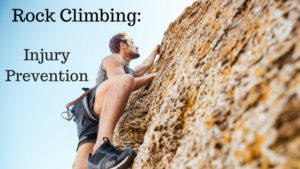
Rock climbing is a great way to exercise and to get out into nature. However, the sport puts an incredible amount of stress on the upper quarter of the body – including shoulders, elbows, wrists, and fingers. To reduce the risk of injury and to keep in top shape while climbing, it is important to utilize good form and also to work on specific conditioning exercises when not on the rocks.
Proper Climbing Technique:
The first bits of advice that most people learn while climbing are typically the following:
–Use your legs
–Hang with your arms straight
Although both of these are true, the second statement is often misconstrued or accomplished incorrectly. Your arms should indeed be maintained straight as much as is possible in order to conserve energy. However, that doesn’t mean that you should be hanging with your arms limp. It is important to engage your scapular muscles while hanging in order to reduce risk of shoulder injuries.
For example, the illustration on the below left is what you should avoid doing while training on a hangboard or while climbing. Keeping the shoulders anteriorly rotated (rolled forward) puts your rotator cuff tendons as well as the cartilage inside your shoulder socket at higher risk for injury. The illustration on the below right demonstrates better form while hangboarding or climbing (although the elbows do not have to be as bent as pictured). Here, the climber has his scapular muscles engaged. This allows the humeral head to remain centered in the socket, decreasing risk of injury.
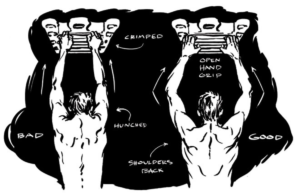
Conditioning Exercises:
There are a number of exercises that are beneficial for injury prevention in climbing. Here are a few of my favorites:
- Wall angels: Have your entire back against the wall with your elbows and pinkies touching as well. This may mean that you have to bend your knees to allow the entirety of your back to be on the wall. Slowly move your arms up and down, engaging the muscles between your shoulder blades. While lifting your arms up, make sure not to shrug your shoulders towards your ears.
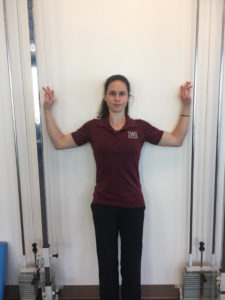
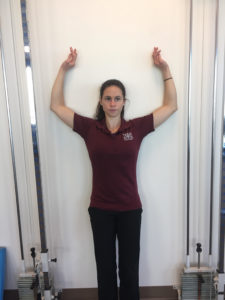
- Wrist extension: Extend your wrist while holding a weight between 2-5lbs, making sure to keep your wrist neutral and not deviating towards your thumb-side.
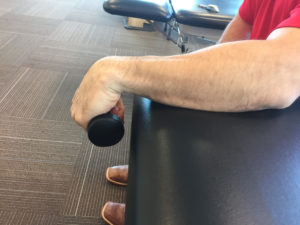
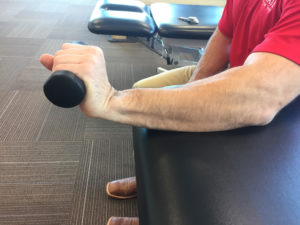
- Antagonist exercises: Technically this isn’t a single exercise, but since climbing is primarily a ‘pulling’ sport, it is important to focus on exercises incorporating a pushing motion. This allows muscles on the anterior (front) and posterior (back) of your body to maintain balanced. Some examples of pushing activities include:
–Tricep Dips
–Push-ups
–Military Press
When should you seek out a Physical Therapist’s advice?
–When you are unsure if you are performing exercises and/or climbing with appropriate form
–If you are noticing decreased range of motion, ‘stiffness’, or reduced ‘smoothness’ in motion while climbing or during life outside of climbing
–For any acute or traumatic injuries
–For any pain that has not resolved within 1-2 weeks
Are you hungry for more information about healthy Rock Climbing?
Come join Lily Swann, PT, DPT, and Local Rock Climbing Enthusiast as she presents several 1-hour climbing injury prevention workshops. Classes are coming soon to climbing gyms in the Austin area. For more event details, contact Lily at Symmetry at 512-339-1500.
